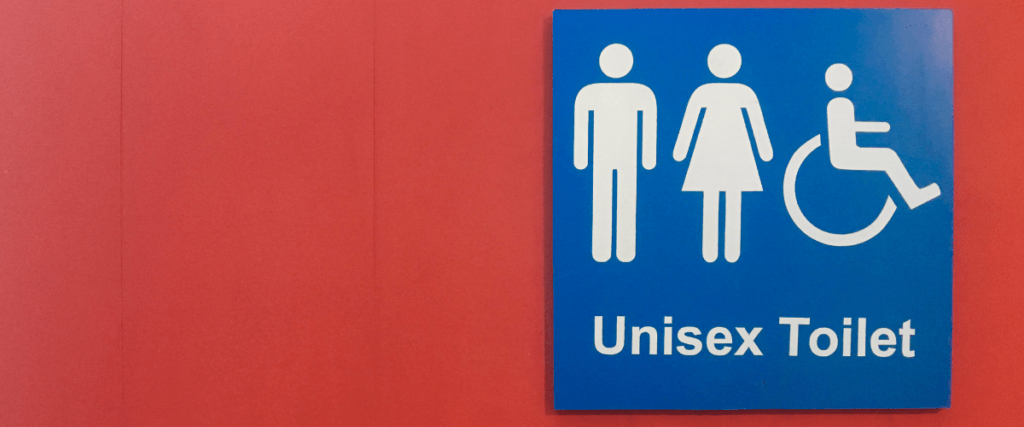
For many businesses, a refurb of their toilet facilities is very much a like-for-like process. Take any sector, from education and care, through to manufacturing and banking, the washrooms layout seldom changes.
But many forward thinking businesses have been leaning into unisex washrooms. So much so, that today this type of toilet setup is leading the way in functional washroom design.
So what is a unisex toilet?
Instead of having two separate washrooms, the unisex approach delivers privacy only where it is essential. Rather than two separate washrooms, each with their own bank of toilet cubicles and wash basins, unisex toilets are centred around one open plan hand washing area.
A typical layout would see a hand wash area in the centre of a room. This may also be completely exposed and be visible from the corridor. In some settings, such as school toilets, the wash basins and hand dryers are actually on the wall of the corridor, with just two private toilet rooms either side.
Often, the hand wash area is flanked with rows of toilet cubicles each side. In some instances, female and male cubicles may be slightly concealed behind a large partition or screen. However, cubicles are always full height, delivering optimum privacy to users. It’s also worth noting, that any cubicle that is to be, or could be used by a woman will need to have a sanitary waste bin.
Benefits of unisex washrooms
The cleanliness and hygiene of a unisex washroom is generally significantly higher than in segregated toilets. Maintenance is also made simpler, with everything being in one space. Unisex washrooms are also the most inclusive option, making them comfortable to use for all genders.
In schools, the opportunity to congregate out of sight in the toilets is drastically reduced. Full height cubicles and open plan washrooms also work as an anti-bullying measure. With the hand wash area often in full view from corridors, they can also be monitored by all members of staff.
The cons of unisex toilets
Some people are quite reserved when it comes to unisex washrooms. The reasons for being conservative span from wanting more privacy, to concerns about the cleanliness of the facilities. In certain environments, some have voiced concerns over sexual assault, but also sexual promiscuity. However, there are counter arguments for unisex washrooms helping to combat these same concerns.
Are unisex toilets legal in the workplace?
Yes. This kind of set-up is being embraced by a diverse number of businesses from offices bringing in shower and changing facilities, through to restaurants and hospitality.
Are unisex legal in schools?
Yes. Schools are one of the main growth areas for unisex toilets. This open plan style of washroom is not only saving space and simplifying maintenance, but is improving hygiene.
If you would like further advice on unisex washrooms and how they might work for your business, please get in touch with one of the team on 01202 650901

